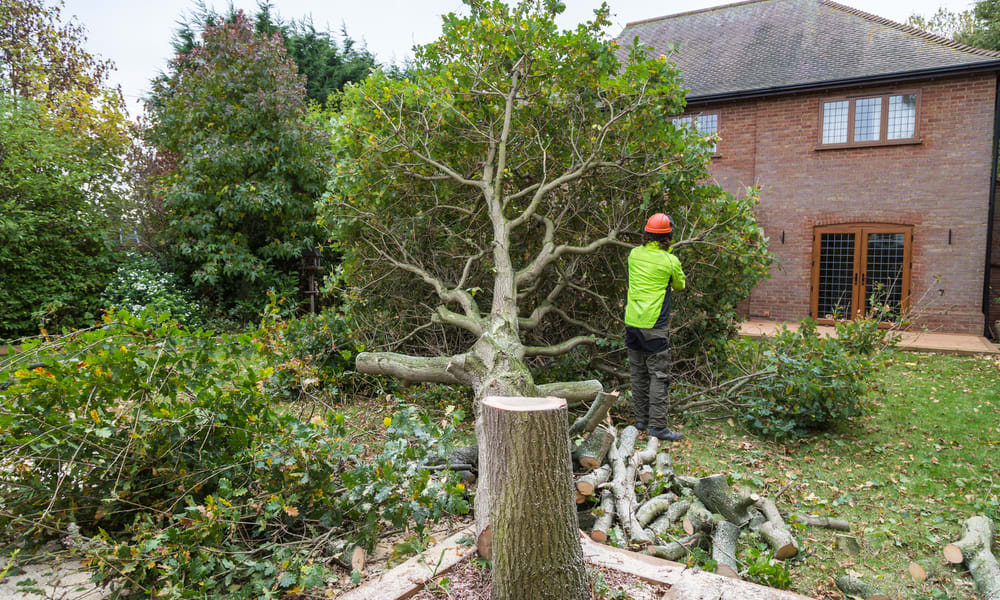The True Cost of Tree Removal and What You Need to Know
Tree removal is a significant investment that requires careful consideration of various factors, from the size and location of the tree to the complexity of the job. Understanding the real costs involved and what services include helps homeowners make informed decisions about their tree care needs. Here's a comprehensive guide to tree removal costs and essential considerations.

What Factors Influence Tree Removal Costs?
Several key factors can significantly impact the cost of tree removal:
-
Tree size: Larger trees generally cost more to remove due to the increased labor and equipment required.
-
Tree location: Trees near buildings, power lines, or in hard-to-reach areas may require specialized equipment or techniques, increasing the cost.
-
Tree condition: Dead, diseased, or structurally unstable trees may pose additional safety risks, potentially raising the price.
-
Tree species: Some species, like oak or maple, are denser and more challenging to remove, which can affect the cost.
-
Time of year: Prices may fluctuate based on seasonal demand, with peak seasons often commanding higher rates.
-
Local regulations: Permits and disposal fees required by your municipality can add to the overall cost.
What’s Included in Basic Tree Removal Services?
When you hire a professional tree removal service, the basic package typically includes:
-
Cutting down the tree: This involves safely felling the tree in sections or as a whole, depending on its size and location.
-
Cutting the trunk into manageable sections: The trunk is usually cut into smaller pieces for easier handling and removal.
-
Limb chipping: Smaller branches are often put through a wood chipper for easier disposal.
-
Site cleanup: Basic cleanup of the immediate area, including raking and sweeping debris.
It’s important to note that additional services like stump removal, hauling away large logs, or extensive cleanup may incur extra charges. Always clarify what’s included in the quoted price before agreeing to the service.
How Much Should You Budget for Tree Removal?
The cost of tree removal can vary widely depending on the factors mentioned earlier. Here’s a general pricing guide based on tree size:
| Tree Size | Height Range | Estimated Cost Range |
|---|---|---|
| Small | Up to 30 feet | $150 - $400 |
| Medium | 30-60 feet | $400 - $800 |
| Large | 60-80 feet | $800 - $1,500 |
| Very Large | 80+ feet | $1,500 - $3,000+ |
Prices, rates, or cost estimates mentioned in this article are based on the latest available information but may change over time. Independent research is advised before making financial decisions.
Keep in mind that these are rough estimates, and actual costs can vary significantly based on your location, the specific circumstances of the job, and additional services required. For example, stump removal typically costs an extra $100 to $400, depending on the stump’s size and the removal method.
When Is Professional Tree Removal Necessary?
While some minor tree trimming can be a DIY project, professional tree removal is often necessary in the following situations:
-
Dead or dying trees that pose a safety risk
-
Trees damaged by storms or disease
-
Trees growing too close to structures or power lines
-
Trees obstructing new construction or landscaping plans
-
Trees with invasive root systems damaging foundations or pavements
Professional arborists have the expertise, equipment, and insurance to safely remove trees in complex situations, minimizing risks to property and people.
What Questions Should You Ask Before Hiring a Service?
To ensure you’re hiring a reputable and capable tree removal service, ask the following questions:
-
Are you licensed and insured? This protects you from liability in case of accidents or property damage.
-
Can you provide references or examples of similar jobs?
-
What specific services are included in your quote?
-
How long will the job take, and what’s your plan for site cleanup?
-
Do you offer stump removal, and is it included in the price?
-
What safety measures do you employ during tree removal?
-
Are there any potential complications you foresee with this particular job?
-
Do you need any permits for this removal, and who is responsible for obtaining them?
-
What is your policy on unexpected issues or additional work required during the removal process?
-
Do you offer any guarantees or warranties on your work?
By asking these questions, you can better understand the service you’re getting and ensure that you’re working with a professional, reliable tree removal company.
In conclusion, tree removal is a complex task that requires careful consideration of various factors. By understanding the true costs involved, what’s included in basic services, and when professional help is necessary, homeowners can make informed decisions about their tree care needs. Always prioritize safety and quality when choosing a tree removal service, and don’t hesitate to ask questions to ensure you’re getting the best value for your investment.




